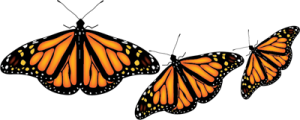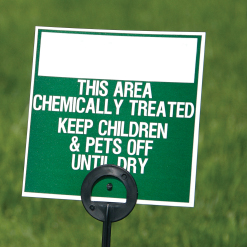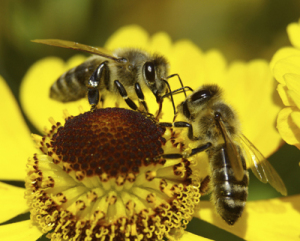SPRING OF AWARENESS AND ACTION – 2014
by Dr. Diana Post with help from Clifford C. Hall
Download full PDFA Sense of Caring
Rachel Carson’s deep sense of caring for human health, the environment and the public’s right to know, compelled her to embark on a challenging writing task that resulted in Silent Spring.1 During the months that followed its 1962 publication, Silent Spring raised author Rachel Carson to heights of influence and prominence that few others have attained. Further, 50 years after her untimely (1964) passing Carson’s environmental legacy largely due to Silent Spring continues to be a source of national pride for many in this country.
By adopting the Carson sense of caring when confronting options, from the most routine choices we make every day, to major life-changing decisions, we can reap a cascade of benefits for ourselves and others. The following are examples of choices for good. (Sections I-IV)
 l) Choosing Organically-Grown Food: Food raised without chemicals benefits those who consume it and can aid the transition to a more ecological system of agriculture. Providing organic food to family and friends can protect those we love from pesticide residues. Moreover the benefits of organic foods extend beyond our immediate circle. Non-chemical growing practices are valuable for their potential to protect wildlife and soil life. Organic farming systems are helping to develop “a new transformative form of agriculture that supports rather than degrades the health of ecosystems.” (Lynch, Derek in Nutrition Action Health Letter, October 2012)
l) Choosing Organically-Grown Food: Food raised without chemicals benefits those who consume it and can aid the transition to a more ecological system of agriculture. Providing organic food to family and friends can protect those we love from pesticide residues. Moreover the benefits of organic foods extend beyond our immediate circle. Non-chemical growing practices are valuable for their potential to protect wildlife and soil life. Organic farming systems are helping to develop “a new transformative form of agriculture that supports rather than degrades the health of ecosystems.” (Lynch, Derek in Nutrition Action Health Letter, October 2012)
 ll) Joining the Monarch Butterfly Restoration Initiative: This effort has the potential to benefit an iconic species, and can help sustain natural habitats for other wildlife in the U.S. and in Mexico as well. Contributing to this restoration can involve growing milkweed plants, creating safe places for pollinators and avoiding use of chemical pesticides. The recovering Monarchs in turn can help sustain a forest and a rural population in Mexico. We can grow native milkweed plants in our own gardens. Further, we can reach out to friends by distributing milkweed seeds, and by providing instructions on creating a safe (chemical-free) habitat for butterflies, bees and beneficial insects. This action for Monarchs can provide benefits to people and environments beyond our own country. Read on for details
ll) Joining the Monarch Butterfly Restoration Initiative: This effort has the potential to benefit an iconic species, and can help sustain natural habitats for other wildlife in the U.S. and in Mexico as well. Contributing to this restoration can involve growing milkweed plants, creating safe places for pollinators and avoiding use of chemical pesticides. The recovering Monarchs in turn can help sustain a forest and a rural population in Mexico. We can grow native milkweed plants in our own gardens. Further, we can reach out to friends by distributing milkweed seeds, and by providing instructions on creating a safe (chemical-free) habitat for butterflies, bees and beneficial insects. This action for Monarchs can provide benefits to people and environments beyond our own country. Read on for details
Note: It is important to make certain that purchased plants have not been already treated with neonicotinoid insecticides, especially if they are attractive to bees an butterflies. (see Section IV for details)
In conjunction with similar efforts by others on behalf of the Monarch butterflies, we can hope to reverse the decline in migratory Monarch populations and as a result help to 1) prevent destructive logging of the forest area in Mexico where the Monarchs overwinter, 2) generate income from ecotourism for rural Mexicans and 3) reduce the use of hazardous chemical pesticides throughout our own country.
Note: First Lady Michelle Obama inaugurated the first-ever pollinator garden on the White House grounds in April 2014.
Responding to concerns about the decline of Monarch butterflies in a letter sent April 14th and co-signed by RCLA, Secretary Vilsack of the U.S. Department of Agriculture (USDA) announced that the department is working to increase habitat for Monarchs and other pollinators. (Letter from Sec. Vilsack to Diana Post, RCLA president, June 10, 2014)
lll) Avoiding Use of Chemical Pesticides for Cosmetic Reasons on Ornamental Landscapes: Can Provide benefits to sensitive human populations, pets, plants and the environment.
 1) A Real Experience Involving Older Adults and Pets: Retirement community residents’ dogs became ill after chemical pesticides had been applied near where they walked. A veterinarian treating these dogs attributed their illnesses to pesticides. An older adult resident reported becoming ill after pesticides were sprayed, as well. Unhappy about pet illnesses associated with recurring applications of chemical pesticides for cosmetic purposes to the landscapes around their homes, residents sought input from Rachel Carson Landmark Alliance (RCLA) on the products used as well as on alternative non-chemical landscaping strategies.
1) A Real Experience Involving Older Adults and Pets: Retirement community residents’ dogs became ill after chemical pesticides had been applied near where they walked. A veterinarian treating these dogs attributed their illnesses to pesticides. An older adult resident reported becoming ill after pesticides were sprayed, as well. Unhappy about pet illnesses associated with recurring applications of chemical pesticides for cosmetic purposes to the landscapes around their homes, residents sought input from Rachel Carson Landmark Alliance (RCLA) on the products used as well as on alternative non-chemical landscaping strategies.
Note: Older adults are known to be sensitive to chemical pesticides (National Pesticides Information Center (NPIC) “Older Adults and Pesticides” Topic Fact Sheet)
RCLA responded to the retirement community request with:
- Reports documenting dangers associated with the specific pesticides used
- Two presentations at the retirement community where expert professionals shared information about alternative pest management strategies with community members.
Michael Talbot discussed “Integrated Pest Management (IPM)”
Chip Osborne, discussed “Transitioning to Organic Lawn Care.”
Outcome: The topic of using chemical pesticides and/or alternatives (in part or all of the community) is still under discussion and chemical pesticides continue to be applied as of June 2014. RCLA remains available for consultation.
2) A Personal Story of Chemical Stalking : Up to 15% of the U.S. population are more sensitive to chemicals including pesticides and may become seriously ill from exposure to such products. There may be a potentially ominous aspect of pesticide use where chemically sensitive individuals are concerned. Pesticide products may be used as weapons to intimidate or threaten such people. Here’s an example of an actual case:
A chemically-sensitive person had been alerting neighbors to the adverse effects of chemical pesticides and asking them not to have such sprays applied to their lawns on a specific day of the week. A company under contract for neighboring lawn care had indicated that they might pursue legal action against the chemically-sensitive person claiming interference with their business-which apparently could not be conducted without toxic chemical pesticides. A colleague of the chemically-sensitive person surveying lawns in the neighborhood, discovered that the owner of a particular lawn adjoining the sensitive person’s property had received and accepted an offer to have his lawn treated weekly by the same landscape company at no cost. The weekly treatments had “burned everything and killed my lawn” according to this property owner. Then the landscape company had applied sod to restore the appearance of the damaged lawn. (“A Neighborhood Lawn Survey” January 1996).
It appears quite possible that the landscape company had intended to target the chemically sensitive person for intimidation through repeatedly spraying the neighboring lawn without charge. In the process serious damage occurred to the treated residential lawn, and the chemically sensitive person was informed of the unusual series of events . Further, based on information obtained through “A Neighborhood Lawn Survey,” actions by the landscape company were referred to as “chemical stalking” by the chemically sensitive person. Following her discovery of this activity by the landscape company an agreement was negotiated whereby she could be protected from toxic chemicals applied to nearby lawns (As told by Susan B. Peterson at the Rachel Carson Open House 2014)
3) Toxicity of the herbicide, 2.4-D: It has been widely-used in agriculture, forestry, and in horticulture on residential lawns to control broad-leaf weeds for many years.
This herbicide’s toxic history needs to become more familiar to residents, gardeners, pet owners and government officials. Why? Because an irresponsible deception has been perpetuated that 2,4-D is “safe”. The latest example of such misinformation is a 2012 APHIS2 Fact Sheet about a GMO soy crop with tolerance for 2,4-D where this chemical is described as “safe.”3 (“Questions and Answers: Dow AgroSciences’s 2,4-D Tolerant Soybean (Event DAS-4406-6)”2012)
Although APHIS identified 2,4-D as “safe” in 2012, one year later the Service was quoted as stating that use of certain chemical herbicides [including 2,4-D] “may significantly affect the quality of the human environment.” (Pollack, A., “Environmental review to delay two engineered crops,” The New York Times, May 10, 2013)
This appears to contradict the 2012 position, yet the earlier “Fact Sheet” with its assurance of 2,4-D safety was found on the APHIS web site as of May 2014. An obvious unanswered question is “Safe to whom or what” particularly in view of the USEPA regulation concerning pesticide safety claims and evidence that 2,4-D can have serious adverse effects.
The information below from government, medical, and mainstream media sources calls into question the designation of “safe” when applied to 2,4-D. Some of the harmful effects associated with the herbicide 2,4-D are:
“In humans prolonged breathing of 2,4-D causes coughing, burning, dizziness and temporary loss of muscle coordination. Other symptoms of poisoning can be fatigue and weakness with… nausea.”
(Kamrin, Pesticide Profiles, 1997)
The herbicide, 2,4-D, is linked to long term chronic conditions in people: neurological disorders (Ecobichon & Joy, Pesticides and Neurological Disaeases, 2nd ed. 1994), cancer and endocrine disrupting (Thyroid) effects. (National Pesticide Information Center (NPIC) “2,4-D Technical Fact Sheet” 11 pages)
 Dogs are significantly more sensitive to 2,4-D [and other similar herbicides]. Adverse effects in dogs to these herbicides have been reported virtually since they were first marketed (Osweiler, G.D., et al, Clinical and Diagnostic Veterinary Toxicology, 3rd ed. 1973, Kendall Hunt, Iowa) (Beasley, V., in Current Vet Therapy 1986). (Van Ravenzwaay, B., et al, Xenobiotica, Aug 2003, v. 33, #8, 805-821)
Dogs are significantly more sensitive to 2,4-D [and other similar herbicides]. Adverse effects in dogs to these herbicides have been reported virtually since they were first marketed (Osweiler, G.D., et al, Clinical and Diagnostic Veterinary Toxicology, 3rd ed. 1973, Kendall Hunt, Iowa) (Beasley, V., in Current Vet Therapy 1986). (Van Ravenzwaay, B., et al, Xenobiotica, Aug 2003, v. 33, #8, 805-821)
A lawn chemical herbicide product formulation containing 2,4-D and a related herbicide that is similar to a product formulation that is still widely used was linked to the life-threatening kidney failure in a healthy young Labrador exposed to a freshly-treated lawn. (Missanelli, M.G., “A pet’s death and chemical lawn care” Philadelphia Inquirer, 10-6-86)
In dogs immediate toxic effects from 2,4-D exposure include vomiting, diarrhea, loss of appetite and oral ulceration as well as depression, incoordination, weakness and myotonia (muscle stiffness) of the rear legs (Osweiler, G.D., et al, eds, Ch 66, Small Animal Toxicology, Wiley Blackwell, 2011)
State regulations intended to prevent damage to sensitive crops have identified 2,4-D as potentially hazardous material. Why? The chemical has a high potential to drift and/or volatilize after application and can cause damage even at very low application rates. (Pearl, L., “Ag coalition petitions EPA, USDA for further review of herbicide -tolerant GM crops”, Pesticide & Chemical Policy, 4-20-12) And the vulnerable crops represent important produce: tomatoes, grapes, green beans, etc.
Phenoxy herbicides such as 2,4-D are restricted in Mississippi, New York, Idaho, Arkansas and Kansas, to name some of the states that have passed protective pesticide drift regulations (Feitshans,T., “An Analysis of State Pesticide Drift Laws,” San Joaquin Agricultural Law Review, 1999, #1 )
 Tomato farmer, Jody Herr blamed 2,4-D and the related herbicide, dicamba for poisoning his crop in 2009 when the herbicides drifted to his fields from farms nearly two miles away (Pollack, A., “A Battle Over an Engineered Crop: Groups Oppose corn Impervious to a Weed Killer,” The New York Times, 4-26-12)
Tomato farmer, Jody Herr blamed 2,4-D and the related herbicide, dicamba for poisoning his crop in 2009 when the herbicides drifted to his fields from farms nearly two miles away (Pollack, A., “A Battle Over an Engineered Crop: Groups Oppose corn Impervious to a Weed Killer,” The New York Times, 4-26-12)
In 2012 a coalition of growers petitioned APHIS to do further research on the environmental impact of 2,4-D before allowing the marketing of 2,4-D tolerant GMO crops such as corn, and soy. APHIS agreed to do further investigation of the matter in 2013 and the Service was quoted as stating as a reason for doing so that their release, “may significantly affect the quality of the human environment.” (Pollack, A., “Environmental review to delay two engineered crops,” The New York Times, May 10, 2013)
lV) Focusing on Pesticide Hazards to Wildlife – Past Neglect by Regulators Needs Correction to Help Restore at Risk Species and their Important Services: Pesticide regulators have failed to give sufficient attention to chemical pesticides’ power to harm pollinators and other wildlife according to Dr. Brian Leahy, director of pesticide regulation for California. In a 2012 interview Dr. Leahy called for more investigations of the effects of pesticides on bees, on frogs and on salmon because these areas have been neglected in the past. (Pesticide & Chemical Policy, 2012, p. 21, “Interview with Brian Leahy”).
For example: The deaths of over 50,000 bumble bees followed spraying of Linden trees with the neonicotinoid insecticide dinotefuran in Oregon. (KOIN, 6-27-13)
Neonicotinoid insecticides (aka neonics) especially when combined with fungicides and other pesticides have been associated with bee population declines. The dramatic die offs in Oregon state were directly linked to the neonic, dinotefuran. Officials banned products with dinotefuran for 6 months in response. (KOIN, 6-27-13)
 Researchers have serious concerns about the effects of bees’ exposures to certain kinds of fungicides (ergosterol-inhibiting fungicides) when combined with pyrethroid and neonicotinoid insecticides and present as residues in pollen and honey. The synergistic effects of such mixtures pose high risks to bees. (Sanchez-Bayo, F., Goka, K., “Pesticide Residues and Bees- A Risk Assessment” PLoS One, v.9, #4, 4-9-14)
Researchers have serious concerns about the effects of bees’ exposures to certain kinds of fungicides (ergosterol-inhibiting fungicides) when combined with pyrethroid and neonicotinoid insecticides and present as residues in pollen and honey. The synergistic effects of such mixtures pose high risks to bees. (Sanchez-Bayo, F., Goka, K., “Pesticide Residues and Bees- A Risk Assessment” PLoS One, v.9, #4, 4-9-14)
Despite petitions from citizens including bee keepers and a two year ban by the European Union, USEPA action to curtail sales of any of the neonic insecticides appears to be on hold until a future date. (For details contact RCLA)
In addition to deaths there are uncounted reductions in habitat and food sources experienced by native bees and other wildlife due to chemical pesticides.
The essential services to human societies and to the natural world generated by wildlife in their natural settings make greater protection of these populations from chemical pesticides an urgent need.
Note: The Behnke Nursery of Maryland an ornamental plant grower announced in June 2014 a policy to eliminate neonicotinoid insecticides from the plants that they grow and to request the elimination of neonicotinoids from growers where they purchase plants. The company also pledges to recommend the least toxic effective remedies for treating plants. Details of these pollinator friendly actions are at http://behnkes.comwebsite/about-us/pesticide-policy.html
Conclusions
Chemical pesticides used on ornamental landscapes for cosmetic purposes are poorly regulated. Some of the levels used in horticultural settings are much greater than those used in agriculture, for example systemic neonicotinoid insecticide applications on ornamental plants can be at levels 32 times greater than those used in agriculture(per Scott Hoffman Black). Further chemical pesticides adverse health and environmental impacts from non-agricultural applications are not sufficiently familiar to the public. As we have shown, various states have regulations protecting sensitive commercial crops from 2,4-D drift as the result of professional pesticide applications for agricultural purposes. Most do not, however, have regulations protecting older adults, pregnant women, chemically sensitive persons, private citizens who apply pesticides, vulnerable pets, vulnerable plants grown in private gardens, as well as beneficial wild plants and wild animals from drifting toxic chemical pesticides applied to ornamental landscapes. Protective regulations are generally lacking when chemical pesticides, such as 2,4-D and others are used for cosmetic purposes on residential ornamental landscapes especially by homeowners (Feitshans, T., “An Analysis of State Pesticide Drift Laws,” San Joaquin Agricultural Law Review, 1999, #1).
In most states when used on residential areas, even by commercial applicators, toxic pesticides (insecticides, fungicides, herbicides) can be applied adjacent to private kitchen gardens and homes with no barrier required and virtually no requirement to warn of possible problems from exposure and drift with a few exceptions.
Here is a question for public consideration: How many activities other than chemical pesticide applications for cosmetic purposes can legally be made by private individuals, yet result in release of material designated as hazardous waste that can drift into a neighbor’s yard, float through a neighbor’s open window, present hazards to older adults, young children and pregnant women, sicken pets, take out wildlife, poison plants, leach into the soil eventually reaching groundwater, and/or run off the land into a nearby stream – all the while killing things?4
Harm may or may not be immediately apparent in the case of human exposure to chemical pesticides. Although they may take years to progress, the long term chronic health problems associated with chemical pesticides are none the less serious: neurological difficulties including Parkinson’s disease, developmental behavioral disorders including ADD, endocrine (thyroid, etc) disorders, as well as cancer.
Lawns and gardens can be maintained weed-free and healthy without regular applications of toxic chemical pesticides especially to areas where families, pets, plants and wildlife can be exposed to and harmed by them.
People, pets, pollinators, plants and wild animals have the right not to be poisoned by toxic chemical pesticides regularly released into the environment for cosmetic purposes on ornamental plants. This issue needs action, urgently.
Recommendations
√ Monarch Butterfly Restoration Actions
The public sector needs to give greater encouragement and support to establishing a multiagency monarch butterfly recovery initiative. Participation in such an initiative should include schools, retirement associations, faith based organizations, environmental groups, and various communities. These groups should be encouraged to plant milkweed, plant butterfly gardens, avoid use of chemical pesticides and instead use alternative, non-chemical pest control methods, when necessary.
Not only will these activities benefit populations of Monarch butterflies, an iconic species but they will also help restore beneficial insects such as wild native bees, ladybugs, lacewings, parasitic wasps, etc. Further assurance of safe habitats for Monarch butterflies throughout their range will require cooperation with Canadians and Mexicans, leading to greater contacts and increased understanding of neighboring countries and peoples.
√ Full Disclosure of Chemical Pesticide Exposure
Garden Centers and Nurseries should be required to carry plants that have been grown organically (without chemical pesticides) and they should be labeled as such. Those plants that have been treated with chemical pesticides should be labeled with the date and identity of the pesticide(s) to which they had been exposed.
√ The Organic Advantage: Beyond Nutrition
The public interest is best served by strong and timely protective regulations addressing chemical pesticide problems. Such regulations are not yet in place to protect honey bees and wild pollinators (bees, butterflies and others) from hazardous neonicotinoid (neonic) insecticides when present alone or in conjunction with other chemical contaminants. These chemicals can be delivered as sprays or present in the pollen and nectar of plants exposed to pesticides in agricultural or horticultural settings. To compensate for the USEPA’s failure to take action curtailing the availability of neonics and other chemicals posing dangers to bees, consumers need to purchase organically-grown produce and ornamental plants. Market chains should have a policy of not carrying produce grown with neonic insecticides whenever possible.
√ Banning Chemical Pesticides for Routine Cosmetic Residential Use
Localities should consider banning routine chemical pesticide treatments for cosmetic reasons on ornamental plants and lawns, especially in areas where vulnerable populations (pregnant women, young children, older adults, chemically sensitive individuals), pets (dogs), garden plants (tomatoes, beans, grapes) and valuable wildlife (pollinators, birds, beneficial insects and aquatic species) may be exposed.
√ Essential Public Education on Chemical Pesticide Hazards
Localities that allow the use of chemical pesticides for ornamental plants and cosmetic landscape purposes should be required to inform all residents of potential risks to people, pets, plants and the environment from such applications. This will of necessity involve an intense educational effort since the public has been and continues to be ill informed and misinformed about the dangers of chemical pesticides used on landscapes for cosmetic purposes.
√ Greater Support for Organic Lawn and Garden Care
Foundations and local governments should provide greater support for communities that plan to adopt organic landscape management. We suggest a certification program, tax breaks, public recognition and appreciation for those who choose to go organic with “A Living Lawn, A Lawn for Living” and other programs.
____________________
1. In Silent Spring Rachel Carson provided extensive information on chemical pesticides’ hazards and in the final chapter touched on alternative strategies for managing pests without chemicals.
2. The Animal and Plant Health Inspection Service (APHIS) is part of the US Department of Agriculture (USDA)
3. Federal law specifically prohibits manufacturers of pesticides from labeling their products as “safe”, non-poisonous, non-injurious, harmless or non-toxic,” even when accompanied by a qualifying phrase such as “when used as directed.” (40CFR:162.10(a)(5)(ix)). These specific prohibitions reflect the process of balancing risks and benefits through which pesticides enter the market for public use. (Letter from Peter Lehner, Aug 23, 2000)
4. Excess pesticide must be disposed of as hazardous waste in many states.
June 2014


